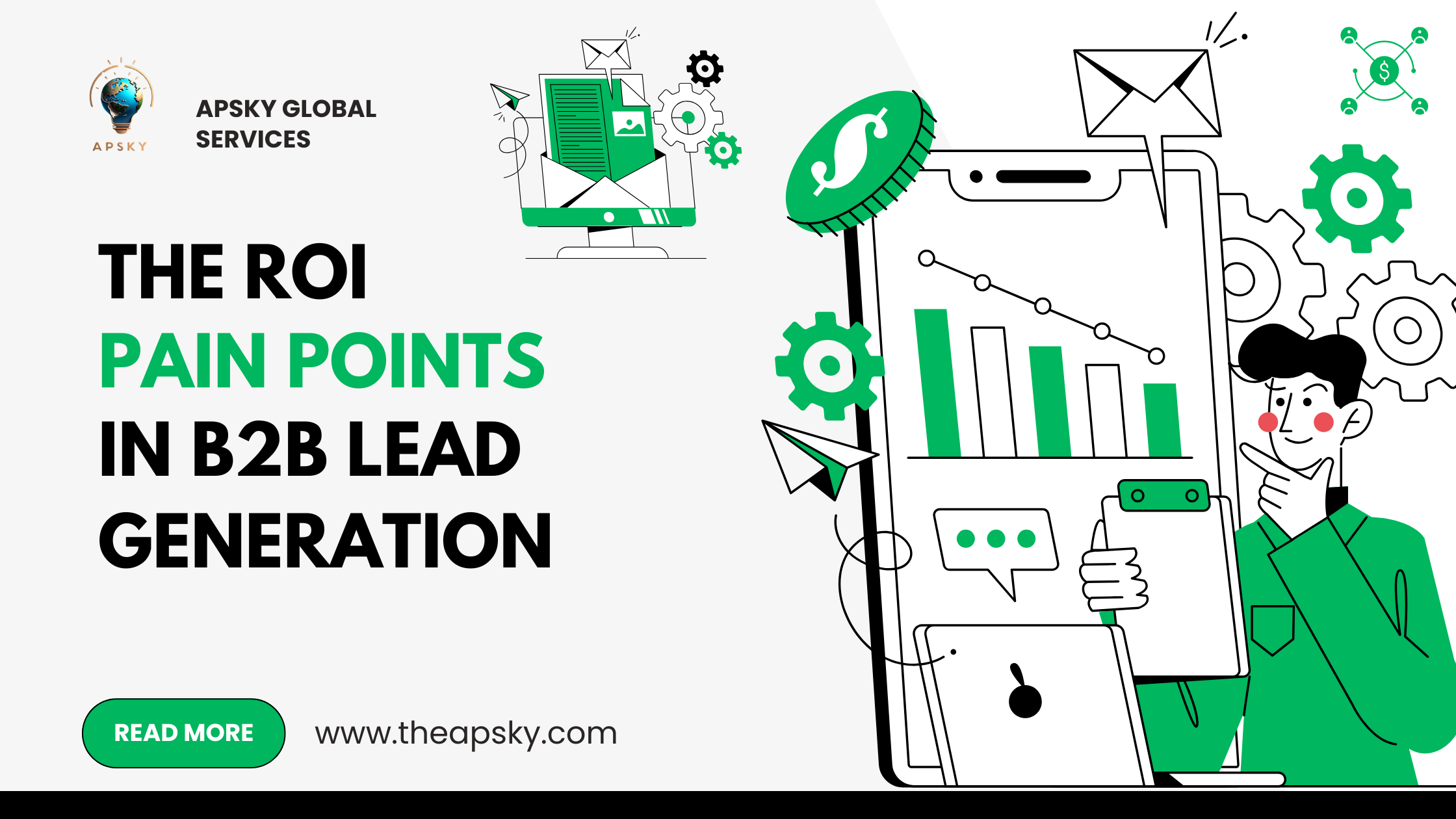In today’s competitive business landscape, B2B product companies face an uphill battle when it comes to maximizing their return on investment (ROI) from lead generation efforts. Despite the availability of advanced tools and sophisticated marketing strategies, many companies struggle to convert their leads into tangible revenue. So, what are the pain points affecting ROI in B2B lead generation, and how can product companies overcome them?
The ROI Pain Points in B2B Lead Generation
1. Low-Quality Leads
A major challenge lies in the quality of leads being generated. Many companies focus heavily on quantity rather than quality, resulting in a bloated sales pipeline filled with unqualified leads that do not convert.
2. Inefficient Targeting
B2B product companies often fail to effectively target the right audience. Poorly defined buyer personas, incomplete data, and lack of segmentation lead to wasted marketing resources on prospects who are unlikely to purchase.
3. Prolonged Sales Cycles
In the B2B space, sales cycles are naturally long. When combined with ineffective nurturing strategies, potential customers can lose interest or choose competitors who address their pain points more promptly.
4. Disconnected Sales and Marketing Teams
A lack of alignment between sales and marketing teams results in miscommunication, duplicate efforts, and lost opportunities. This misalignment significantly affects lead conversion rates and, ultimately, ROI.
5. Insufficient Measurement and Analysis
Without proper tracking mechanisms, product companies struggle to measure the effectiveness of their lead generation campaigns. This lack of insight hinders data-driven decision-making, leading to suboptimal ROI.
Strategies to Overcome ROI Challenges
1. Focus on Lead Quality Over Quantity
Shift the emphasis from generating a large number of leads to identifying high-quality prospects. Use predictive analytics, AI tools, and comprehensive scoring models to prioritize leads with the highest conversion potential.
2. Sharpen Targeting and Personalization
Invest in building detailed buyer personas and leverage advanced segmentation techniques. Tools like intent data and behavior analytics can help identify prospects actively seeking solutions that align with your product offerings.
3. Enhance Lead Nurturing
Deploy tailored nurturing campaigns with personalized content at every stage of the sales funnel. Automated workflows and targeted email sequences can ensure consistent communication, keeping prospects engaged.
4. Foster Sales and Marketing Alignment
Establish clear communication channels between sales and marketing teams. Shared KPIs, regular sync-ups, and collaborative CRM tools can bridge the gap, creating a unified approach to lead generation.
5. Implement Robust Analytics
Utilize advanced analytics platforms to track the performance of your campaigns. By monitoring metrics like cost per lead (CPL), customer acquisition cost (CAC), and lifetime value (LTV), you can refine strategies and improve ROI.
The Future of B2B Lead Generation
To stay competitive, B2B product companies must embrace innovation in lead generation. AI-driven solutions, predictive modeling, and real-time personalization are rapidly becoming industry standards. Furthermore, investing in content marketing and thought leadership can position your brand as a trusted partner, driving inbound leads that are more likely to convert.
Finally
While the challenges of achieving a high ROI in B2B lead generation are significant, they are far from insurmountable. By focusing on lead quality, enhancing targeting strategies, and fostering collaboration between teams, product companies can unlock the full potential of their lead generation efforts. A data-driven approach, supported by modern technology, is the key to navigating today’s ROI challenges and achieving sustainable growth.
Are you ready to transform your lead generation strategy and boost your ROI? The time to act is now!




